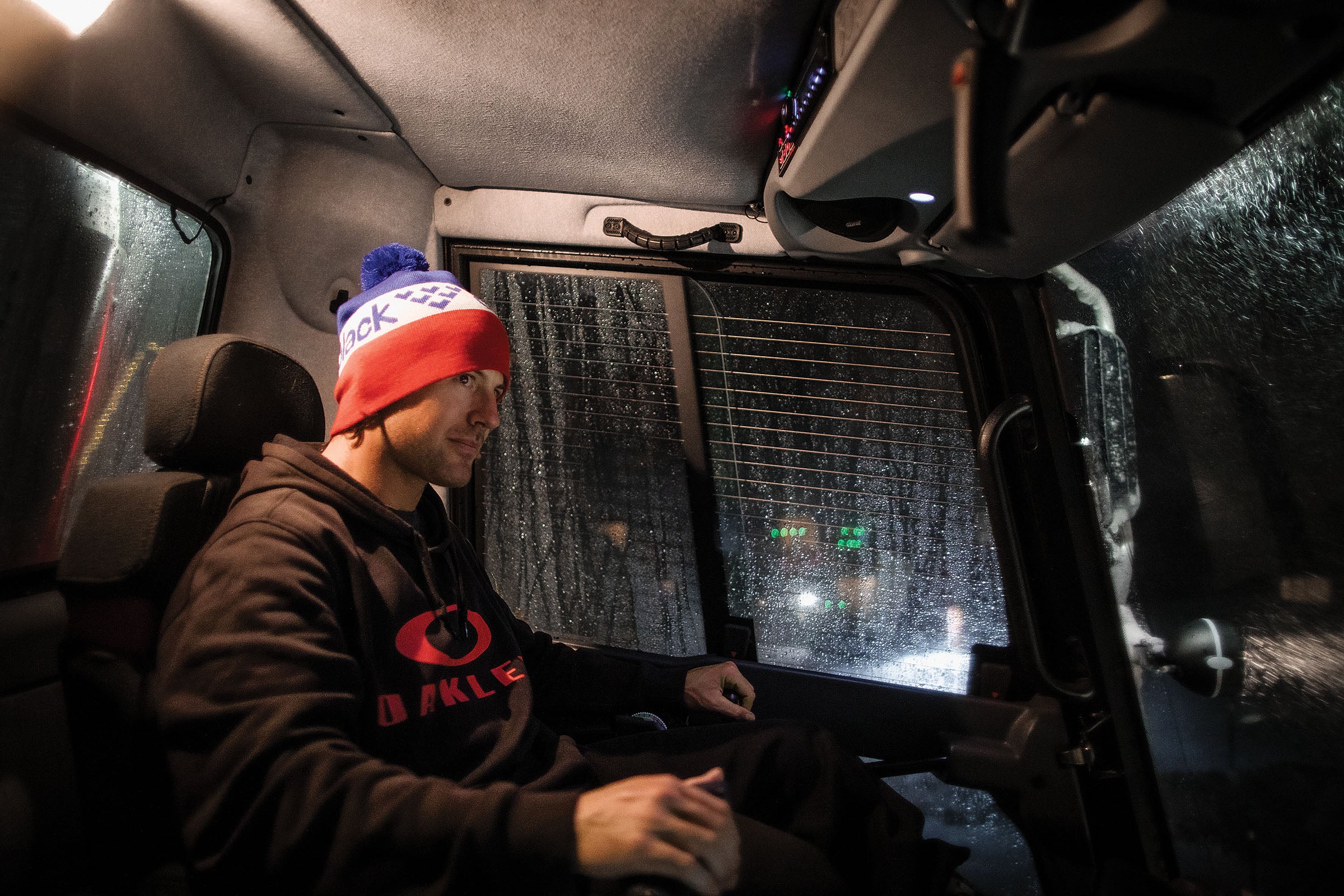Why Mammoth’s Grooming Supervisor Never Misses First Chair

(Photo: Christian Pondella)
It took Bernie Rosow some trial and error before he found his calling as a snowcat operator at Mammoth Mountain. His first job out of high school was as a handyman at the Alta Lodge in Utah. He lasted two years before he was let go. After that, Rosow managed to get hired and fired from every lodge in Little Cottonwood Canyon. He’d be the first to admit he had trouble showing up to work on time when there was skiing to be done.
For the Vermont native, skiing has always been the priority. It’s why, when he landed a job as a cat driver at Mammoth 20 years ago—which allows him to work nights—he made sure to keep it. After grooming stints in New Zealand and Australia, he’s now Mammoth’s Grooming Supervisor, responsible for a mountain that sees 400 inches of annual snowfall.
He doesn’t skip work anymore, but he doesn’t often miss first tracks either.
It was like Valentine’s Day and I went to some rave. I showed up at work late and the GM fired me. So I called a girl I met at the rave and she picked me up. I lived with her the rest of the winter.
She decided to move to Colorado so I gave her gas money to drive me to Mammoth. She dropped me off with a backpack and a tent. I slept in the woods.
I went to the job fair in town and told everyone I wanted to ski every single day it snowed, I wanted to be the first person in the lift line, and I didn’t want to talk to people at work. They told me I should be a cat driver.
I haven’t missed first chair on a powder day in 20 years. Actually, I take that back. When my son was born in L.A., it snowed, and I was watching my buddies do backflips off cliffs on the webcam.
At Mount Ruapehu, we worked 12 hour shifts, six days a week. Halfway through the winter they wanted me to work from noon to midnight. I told them, ‘If I can’t ski during the day, I’ll quit and fly home. I’m not working that shift.’
I’m going to work hard and I’ll do 70 hours a week, but I’m also going to ski all day, every day, because that’s the point.
Grooming allows me to be super connected with our snowpack. Being on the hill during these big storms, I’m so involved in the snow it really allows me to pick and choose the days that I go into the backcountry for big objectives.
I’ve been tired my whole life, but life’s too short to worry about that. When the conditions are good, you find the energy.
Since having a kid, I can relate a lot more to the dude who suffered the five-hour drive in a snowstorm to get his
family here. That’s why we groom good runs. After the hellacious process of getting here, they finally get that one moment where they’re actually skiing.
More Stories from Diehard Skiers
For the ultimate story of grit and determination, read 50 Years Later, The First Man to Ski the Grand Teton Remembers His ‘Fantastic Adventure’. Bill Briggs defied the odds—and a fused hip—to claim the first ski descent of the Grand Teton. His story is a testament to courage, resilience, and the unshakable spirit of mountain adventure.
Passion, perseverance, and powder days—discover why Chip Lambert hasn’t missed a season of ski instructing in over 54 years. In Why I Haven’t Missed a Season of Ski Instructing in 54 Years, Lambert shares the lessons, community, and love for the mountains that have kept him on the slopes for decades. It’s an inspiring reminder of why we keep coming back to the snow, season after season.
In What It’s Like to Be a Black Ski Mountaineer in Bend, Oregon, Mallory Duncan reflects on a backcountry journey that shaped his perspective on race, identity, and belonging in the outdoor industry. It’s a powerful story about finding healing in nature and using adventure to advocate for inclusion and change.